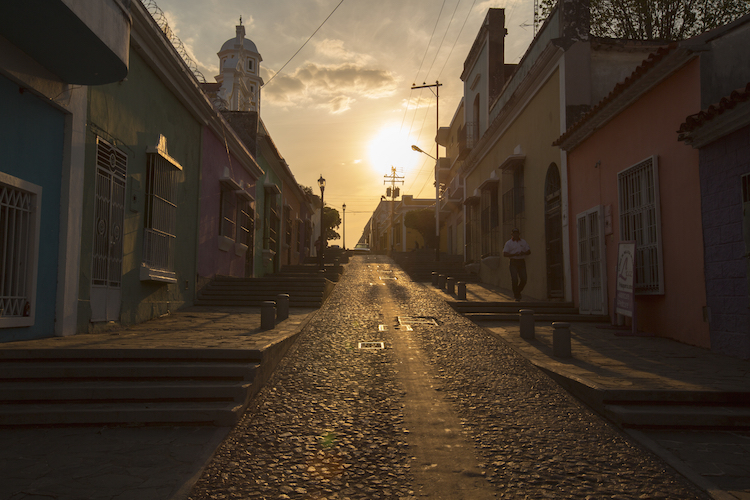By Virginia Anzola-Vitols
As the soothing breeze gracefully swirls into the Caracas valley at the end of a particularly hot day, the implacable sun finally gives in and continues its final stretch down towards the horizon. In similar motions, the neighbours of Chacao, slowly reduce the rhythm of their paces and gradually release the tensions of another hectic day of work. It is now time for a new and more pleasant chapter of the daily routine, marked by camaraderie, gossip and frolicking across the neighbourhood roads.
As I watch a mechanic smoking a tired cigarrette, who wears a stained blue coverall that doesn’t give any credit to the original bright blue, an old Italian lady walks past me on her way to feed the neighbourhood’s homeless cats. She’s been carrying out this ritual for years. When she reaches the abandoned plot, where the cats have found safe dwelling for generations, the old lady searches inside her plastic bag and without needing to bend down -as the inclemencies of time have already done the trick- she will stretch one arm down and drop the viands, greeted with enthusiasm by the felines of different colours and sizes.
Suddenly, my attention is brought back onto my street to avoid being run over by three little boys who come running and screaming, boasting in their dirty school uniforms the joys of being children and having finished another day of school. They disappear inside a building, just like any other in Chacao, a bit deteriorated by time but still beautiful in their 30s and 40s european styles: not very tall, with some balconies in the facades and adorned by Spanish and Italian styled iron window grills. Many of the open windows exhibit a number of colourful parakeets and parrots who, chirping and squawking, also join in the celebration of another rewarding day that has come to its end.
Of all these ceremonies, one of my favourites is the one performed by the old men in checkered flat caps. Many of them display original European features -first or second generation ones- while others exhibit the blending of European fairer tones with one or many of the darker shades of our beautiful Venezuelan palette. These men, who earn their lives driving taxis or attending to their local businesses, gather daily in the neighbourhood squares to recount stories of their day, or simply to exchange anecdotes about those long-gone years that will never return.
In front of the residential buildings and businesses which extend along the curb, and run parallel to endless lines of parked cars along the road, neighbours and friends gather to exchange opinions on personal matters and to offer solutions to the troubled politics and other evils of the world. The road gradually grows quieter except for an odd outburst of laughter from an open window and random voices of neighbours who finally say good-bye to each other. Not so lucky are those who are stuck in the traffic jam down the road that leads to the motorway. At the turn of a second, the cars burst out in a joint protest through their loud horns, altering the peace that had reigned for a moment in one street in Chacao.
About the author
I’m a Venezuelan Literary Translator, writer and mother of two living in London since 2007. I have a long list of interests and passions; among them: running, writing, literature, philosophy, cultures, people, everything Italian, Venezuela, dogs and my house. The purpose of this blog is to document my experiences as a foreigner living in London, some reflections on politics and plenty of talk over life inspired on my favourite reads.
Image of street via Shutterstock



